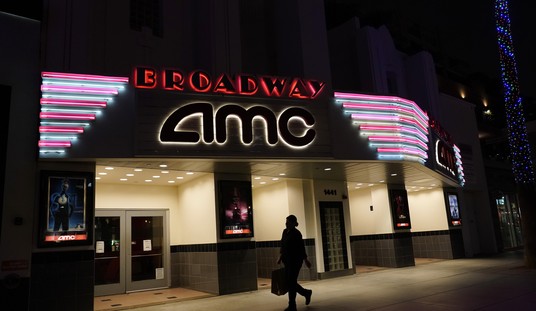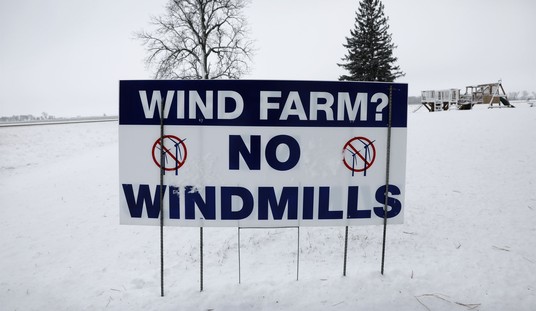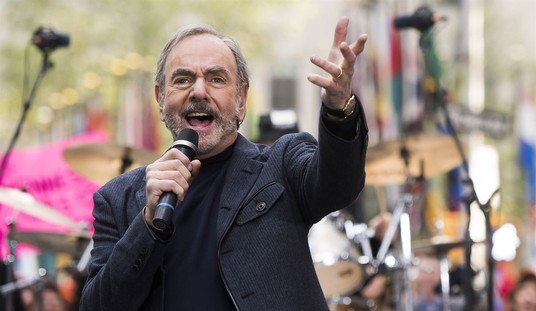The Washington Post’s Aaron Blake has a piece up today about whataboutism in politics. Jumping to his conclusion, Blake writes that it’s possible that the media isn’t always completely fair and therefore such claims shouldn’t automatically be dismissed. He even admits he may be guilty of this himself:
It’s tempting to look at whataboutism dismissively, as I’m certainly guilty of, and it is unquestionably used plenty of times by overzealous partisans who are operating in bad faith. But sometimes there’s a valid point to be made. People shouldn’t be too accommodating to those trying to “work the refs” when there is just no real comparison to be made, but it never hurts to reevaluate yourself.
That’s a decent note on which to build. Unfortunately, as I mentioned, it comes at the very end of his piece after Blake has spent all of the preceding paragraphs doing exactly what he recommends against, i.e. dismissively passing over examples where the media clearly displayed a double standard. Let’s start with this:
Many of the most popular recent examples of this include comparing things President Biden did to what President Donald Trump was pilloried for (on things such as “kids in cages”)…
Thank link goes to one of his own previous pieces titled “No, Biden’s new border move isn’t like Trump’s ‘kids in cages.’” He wrote that one in February when it was still somewhat plausible to deny that there was a serious crisis happening at the border (unlike now when it’s not plausible at all). But looking his old piece in retrospect, it appears it was written to confuse rather than enlighten:
Trump’s policy on children at the border wasn’t controversial merely because it resulted in children being held at the border, which is a long-standing reality and is what will happen at this facility. It was controversial because it forced children to be separated from their parents given its hard-line policy requiring that the parents be held and not released into the country (and given that children couldn’t be held with their parents). This, in effect, made for more children (often very young) that needed to be held alone — about 3,000 in total — beyond the unaccompanied minors (who are often older) who arrive.
It was also controversial in large part because of some of the conditions in which many of the children were then held: often in large groups behind chain-link fences at Border Patrol stations.
Whether you called those “cages” or “chain-link partitions” or anything else, though, that’s not the situation at the border facility the Biden administration is reactivating. Carrizo has many more facilities for those staying there — to the point where it costs $775 per day per child. Nor is the administration forcing these children to be separated from their parents. Whatever one thinks about how these children are handled once they’re taken into custody — and there are valid debates about both the speed and efficacy of that process — it bears little resemblance to what happened under Trump. They are not being held behind chain-link fences at a Border Patrol station because of a policy that requires them to be separated from their parents.
Trump’s ill-advised child separation policy was implemented in April 2018 and ended in June 2018 when Trump himself signed an executive order reversing the zero-tolerance policy. And it’s true that’s when some of the “kids in cages” controversy started. However, there was a bigger surge of unaccompanied minors at the southern border a year later in 2019. Overcrowding of border patrol facilities was at crisis levels with thousands of children being held longer than the 72-hours allowed by law. The reports about “kids in cages” and inhumane treatment were thus redoubled in 2019 by an eager media:
- Vox: “The horrifying conditions facing kids in border detention, explained” – June 2019
- New Yorker: “Inside a Texas Building Where the Government Is Holding Immigrant Children” – June 2019
- ABC News: “Doctor compares conditions for unaccompanied children at immigrant holding centers to ‘torture facilities’” – June 2019
- Texas Monthly: “In El Paso, Border Patrol Is Detaining Migrants in ‘a Human Dog Pound’” – June 2019
- Atlantic: “Why a Government Lawyer Argued Against Giving Immigrant Kids Toothbrushes” – June 2019
- Esquire: “An Expert on Concentration Camps Says That’s Exactly What the U.S. Is Running at the Border” – June 2019
- CNN: “Ocasio-Cortez compares migrant detention facilities to concentration camps” – June 2019
- Human Rights Watch: “Written Testimony: ‘Kids in Cages: Inhumane Treatment at the Border’” – July 2019
- Washington Post: “‘Kids in cages’: House hearing examines immigration detention as Democrats push for more information” – July 2019
There’s a lot more like this but you get the idea. The detention of migrant kids at the border was roundly condemned as inhumane and even tantamount to torture, not in 2018 during the child-separation policy but a full year after that policy ended. Then, as now, we had a big surge of unaccompanied minors at the border and border patrol could not hand off kids that were arriving to HHS quickly enough. Many were packed into facilities that were never designed for kids for longer than they should have been there. There was nearly unanimous condemnation of this situation in the harshest possible terms.
So back in February, Aaron Blake was writing that the situation then wasn’t comparable to what’s happening now at the border, but reality has since caught up to that claim. In fact, the situation now is arguably worse given that it involves a record number of kids. Photos of these facilities were published in March showing the same kind of overcrowding. All that has changed is that the chain-link fencing has been replaced with plastic sheeting. The Associated Press later reported on a facility which was supposed to hold 250 people was instead crammed with 4,000.
I want to be very clear what I’m saying here so that Aaron Blake or anyone else can’t dismiss it. The facts about the overcrowded facilities were published a full month after that excerpt above, i.e. the one he wrote in February. I’m not faulting Blake for not being clairvoyant. The point is that he’s still pointing back to that piece today as if nothing has changed. Remember, we started all of this with Blake writing that this was an a popular example of whataboutism and linking to his old piece as if to say I dealt with this already. But it turns out Blake didn’t deal with it, not in light of what has since been revealed about the horrendous conditions. He really needs to look back at the full-court press against “kids in cages” in 2019 and compare that to now because it’s not very different at all.
In fact, if he’s interested he can start here where I compared Vox’s outraged reaction in 2019 to their rather muted reaction to the same (or worse) conditions this month. The bottom line is that this isn’t whataboutism at all. It’s literally the same situation. The major difference is in the media’s reaction.
That’s just one example and obviously I can’t look at every one he raises (and dismisses) or this post would be 5,000 words long. So let’s just consider one more example:
Take the most recent big example of whataboutism: The Capitol riot and its circumstances compared to various other things, such as racial-justice protests.
You can point to the relatively little per capita violence and deaths that occurred during last summer’s racial-justice protests, for example, but those who watched looped videos of fires at those protests and of violent protesters on Fox News will never believe that’s the full picture. They’ll be convinced that the level of violence at those protests is much greater than the numbers suggest. On a baser level, they’ll also be less convinced about the moral rectitude of the cause, which colors all other perceptions.
You get the idea. Fox News has bewitched people into thinking BLM protests were violent when they really weren’t. I have to say up front that I don’t think this is a great comparison but let’s keep going. Blake is linking back to a piece by Philip Bump which, on the issue of violence, links back to a piece published in the Monkey Cage titled “This summer’s Black Lives Matter protesters were overwhelmingly peaceful, our research finds.” Here’s the argument:
Since 2017, we have been collecting data on political crowds in the United States, including the protests that surged during the summer. We have almost finished collecting data from May to June, having already documented 7,305 events in thousands of towns and cities in all 50 states and D.C., involving millions of attendees. Because most of the missing data are from small towns and cities, we do not expect the overall proportions to change significantly once we complete the data collection…
Here is what we have found based on the 7,305 events we’ve collected. The overall levels of violence and property destruction were low, and most of the violence that did take place was, in fact, directed against the BLM protesters.
I have no reason to question the accuracy of the data. It roughly matches with another report the Post wrote about last year that found 7% of protests last summer turned violent. There’s also a report by the Major Cities Chiefs Association which came to similar conclusions as the data Blake is relying on, i.e. only about 7% of protests nationwide were violent.
What the Monkey Cage piece doesn’t tell you (and the MCCA report does) is that the small percentage of protests that were violent nevertheless did a massive amount of damage to property and to police officers.
In total, there were 8,700 protests that took place in most major cities between May 25th and July 31st, 2020. While the vast majority of these protests were peaceful, a large portion did include non-violent acts of civil disobedience such as the takeover of a roadway or disruption of commerce. Additionally, there were 574 protests that
involved acts of violence, some of which were severe. This violence was limited to only 7% of all protests and in most cases, the acts were perpetrated by individuals or small groups that infiltrated the larger protests. Nonetheless, the sheer volume of protests, combined with the level of civil disobedience and existence of some ultra-violent events, created an extraordinarily challenging environment for law enforcement agencies…In cities where violence did occur, assaults on police officers, looting, and arson were the most common criminal activities. Approximately, 72% of major city law enforcement agencies had officers harmed during the protests.9 This included nearly every agency that experienced at least one violent protest. In total, over the course of the civil unrest from May to July, more than 2,000 officers sustained injuries in the line of duty. One agency reported 50 officers being injured in a single week of protests. Another agency reported that 462 of their officers were injured during the protests in their jurisdiction.
According to a company that tracks insurance claims, the 2020 riots were the most destructive in recent history, doing up to $2 billion in total damage. That’s more than the 1.4 billion the Rodney King riots did (in adjusted dollars). These riots weren’t just destructive, they were historically destructive.
All of that to say, choosing to look at the “relatively little per capita violence and deaths” as Blake does, seems like a dodge. It’s a way to avoid the fact that we’re talking about $2 billion in damage and 2,000 injured police officers connected to these protests. It’s possible to say that most of these protests were peaceful and also admit that damage of those that were violent was quite severe.
Again, I don’t really think the comparison between ongoing, nationwide protests and a single incident at the Capitol is a good one to start with, but there’s no denying which did more damage. It’s not even close. If Blake really wanted to operate in good faith, he could at least mention some of that. He could point out to readers that there’s a reason people made the comparison in the first place. It is indeed tempting to look at whataboutism dismissively and it mostly seems that is what Blake has done.








Join the conversation as a VIP Member